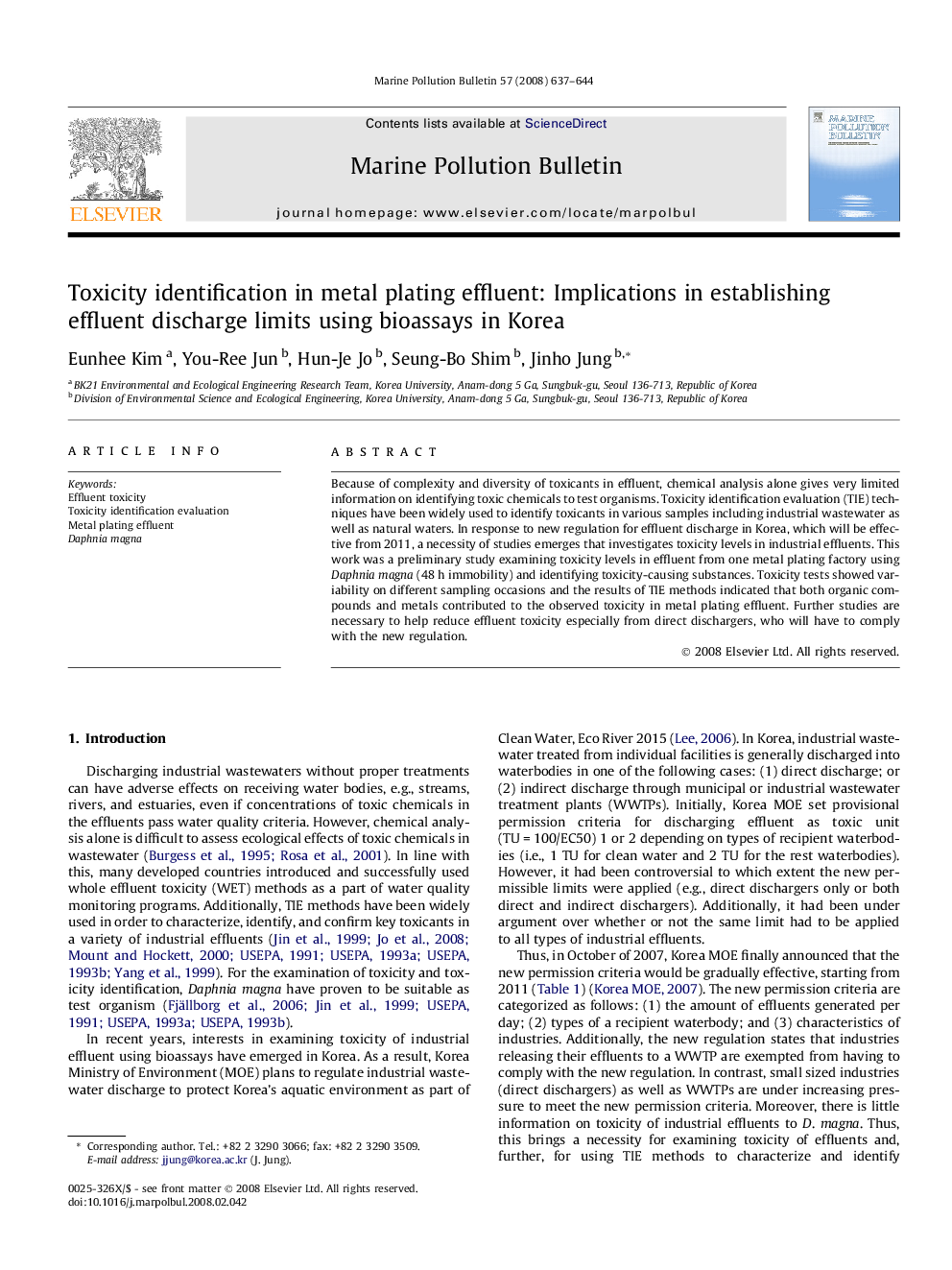| Article ID | Journal | Published Year | Pages | File Type |
|---|---|---|---|---|
| 4477080 | Marine Pollution Bulletin | 2008 | 8 Pages |
Because of complexity and diversity of toxicants in effluent, chemical analysis alone gives very limited information on identifying toxic chemicals to test organisms. Toxicity identification evaluation (TIE) techniques have been widely used to identify toxicants in various samples including industrial wastewater as well as natural waters. In response to new regulation for effluent discharge in Korea, which will be effective from 2011, a necessity of studies emerges that investigates toxicity levels in industrial effluents. This work was a preliminary study examining toxicity levels in effluent from one metal plating factory using Daphnia magna (48 h immobility) and identifying toxicity-causing substances. Toxicity tests showed variability on different sampling occasions and the results of TIE methods indicated that both organic compounds and metals contributed to the observed toxicity in metal plating effluent. Further studies are necessary to help reduce effluent toxicity especially from direct dischargers, who will have to comply with the new regulation.
